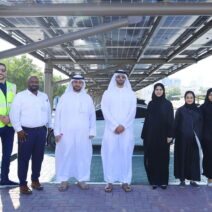As we cast our gaze toward the year 2050, a tapestry of possibilities unfolds, intricately woven with the threads of climate change. The observable phenomena attributed to anthropogenic activities—rising temperatures, erratic weather patterns, and shrinking ice caps—serve as harbingers of a planet transformed. While the scientific community continues to detail these impending realities, our collective imagination often flits between fascination and dread. This intersection of observation and deeper existential inquiry is what captivates us about our environmental future.
The trajectory we are currently on suggests that global average temperatures could increase by approximately 1.5 to 2 degrees Celsius above pre-industrial levels by mid-century. This scenario is more than a mere statistical forecast; it implicates a series of cascading effects that will reshape the biosphere and human existence alike. Ecosystems will be profoundly affected, leading to a loss of biodiversity. Species unable to adapt to these rapidly changing conditions will face extinction. Coral reefs, for instance, which serve as vital marine habitats, are predicted to suffer loss of over 70%. Such changes will not just be ecological but will resonate through food chains, impacting fisheries and thereby human livelihoods.
In addition to biodiversity loss, the increase in average global temperatures will exacerbate weather extremes. The frequency and intensity of storms, droughts, and floods are expected to escalate, posing formidable challenges to infrastructure and necessitating relentless resilience on behalf of affected populations. Coastal regions, already vulnerable, will face the dual threats of rising sea levels and severe storm surges, leading to unprecedented levels of displacement and even loss of territory. Indeed, the World Bank anticipates that climate change could cause over 140 million people to become climate migrants over the next thirty years, compelling nations to grapple with migration crises of unforeseen proportions.
One cannot discuss the implications of climate change without addressing its socio-economic ramifications. The devasting impacts of climate change are likely to exacerbate existing inequalities, primarily affecting poorer nations that are less equipped to cope. Vulnerable populations often rely heavily on climate-sensitive resources such as agriculture, making them acutely susceptible to fluctuating weather patterns. As yields diminish due to unpredictable rainfall or extreme temperatures, food security will become a pressing issue. The specter of malnutrition and hunger looms large, particularly in areas where subsistence farming is predominant.
Urban areas, too, are poised for radical transformation, burdened by the dual challenge of a burgeoning population and climate impacts. By 2050, it is estimated that two-thirds of the world’s population will reside in cities. Urban heat islands will intensify; infrastructure will face an increased risk of failure, particularly during extreme weather events. These challenges necessitate innovative urban planning and architecture that can withstand such crises. The concept of “green cities” integrating sustainable design, renewable energy sources, and urban forestry becomes not just avant-garde but essential in this context.
Water scarcity is another grave concern. As rainfall patterns shift and evaporative losses increase due to higher temperatures, freshwater supplies will dwindle, compelling societies to rethink water management strategies. Waterborne conflicts could become increasingly common as competition for this precious resource intensifies. Thus, by 2050, solutions that encompass desalination, rainwater harvesting, and improved efficiency in water use will not merely be advantageous but vital.
In light of these predictions, the role of policy and international cooperation becomes irrefutably critical. Addressing climate change necessitates an unprecedented level of collaboration involving governments, businesses, and civil society. By 2050, we will need robust climate action frameworks, cutting carbon emissions, transitioning to sustainable energy sources, and protecting carbon sinks. The shift to renewable energy, such as solar, wind, and hydroelectric systems, promises to be an indispensable cornerstone of this endeavor.
Technological innovations will also play a pivotal role in our adaptation and mitigation strategies. Advances in carbon capture and storage, sustainable agriculture, and eco-friendly manufacturing processes could significantly lower greenhouse gas emissions. Furthermore, the utilization of artificial intelligence in monitoring environmental changes can provide valuable insights, allowing for timely and informed responses to changing climatic conditions.
Yet, even as we explore these paths forward, a stark reality persists: public awareness and behavioral change are paramount. The fascination surrounding the climate narrative, which encompasses both the disturbing and the hopeful, must penetrate deeper into the fabric of society. Education systems will need to nurture an environmentally literate citizenry equipped to advocate for sustainable practices and policies.
Ultimately, the year 2050 presents a fork in the road for humanity. One path could lead to a dystopian landscape fraught with crises, conflict, and despair. Alternatively, another path may offer the promise of a harmonious coexistence between humanity and nature, where thoughtful stewardship is embraced across all levels of governance and society. The choices made today will indelibly imprint themselves upon the generations that follow. This impending future compels us not merely to witness but to act, sparking a movement that transcends the singular experience and embraces the collective will to inscribe a more sustainable and equitable legacy.








